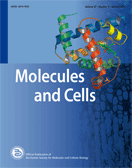Whole Genome Analysis of the Red-Crowned Crane Provides Insight into Avian Longevity
HyeJin Lee, Jungeun Kim, Jessica A. Weber, Oksung Chung, Yun Sung Cho, Sungwoong Jho, JeHoon Jun, Hak-Min Kim, Jeongheui Lim, Jae-Pil Choi, Sungwon Jeon, Asta Blazyte, Jeremy S. Edwards, Woon Kee Paek, and Jong Bhak1

The red-crowned crane (Grus japonensis) is an endangered, large-bodied crane native to East Asia. It is a traditional symbol of longevity and its long lifespan has been confirmed both in captivity and in the wild. Lifespan in birds is known to be positively correlated with body size and negatively correlated with metabolic rate, though the genetic mechanisms for the red-crowned crane’s long lifespan have not previously been investigated. Using whole genome sequencing and comparative evolutionary analyses against the grey-crowned crane and other avian genomes, including the long-lived common ostrich, we identified redcrowned crane candidate genes with known associations with longevity. Among these are positively selected genes in metabolism and immunity pathways (NDUFA5, NDUFA8, NUDT12, SOD3, CTH , RPA1, PHAX, HNMT , HS2ST1 , PPCDC , PSTK CD8B, GP9, IL-9R, and PTPRC). Our analyses provide genetic evidence for low metabolic rate and longevity, accompanied by possible convergent adaptation signatures among distantly related large and long-lived birds. Finally, we identified low genetic diversity in the red-crowned crane, consistent with its listing as an endangered species, and this genome should provide a useful genetic resource for future conservation studies of this rare and iconic species.
Keywords: genome, longevity, red-crowned crane
Available for purchase here.
